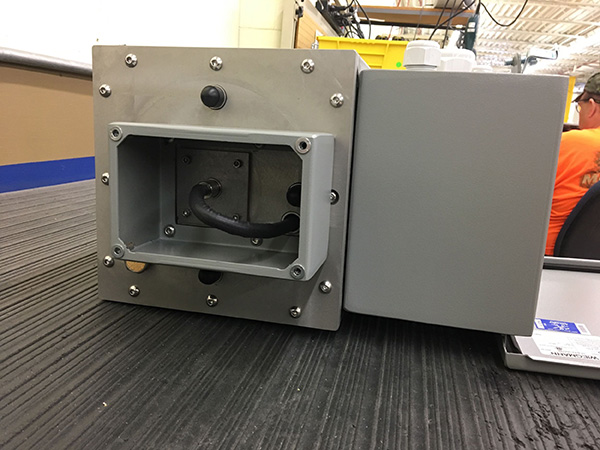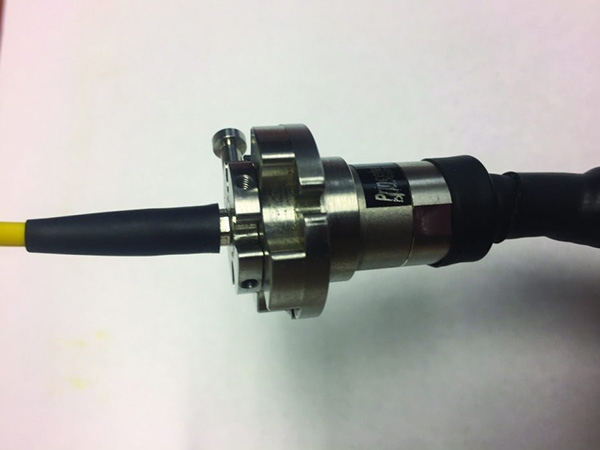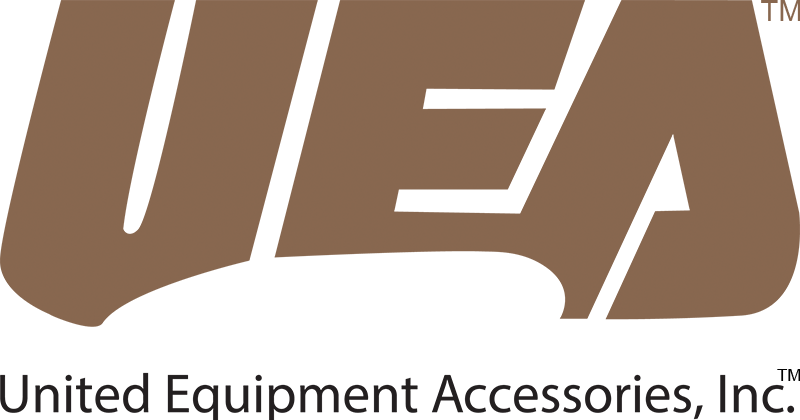This article originally appeared in Wind Systems Magazine, March 15, 2018.
-By Jesse Shearer
Engineering Manager
United Equipment Accessories, Inc.
Fiber optic rotary joints are being considered more and more as a replacement for conventional precious metal contacts in wind turbines.
When extremely high-speed data communication is a necessity in a wind turbine, one solution is a fiber optic rotary joint (FORJ).

While not a new component, FORJs are becoming more prevalent with the need for reliable data transmissions in even the harshest of environments and applications.
A fiber optic rotary joint is used in wind turbines to transmit data between the top box and the hub of the wind turbine. In most cases, FORJs are used in conjunction with a slip ring that is transferring power and possible other signal lines. They are generally mounted to the slip ring itself and are limited to communications only. For most wind-turbine applications, a single channel FORJ is usually sufficient.
Why switch from conventional precious metal contacts to fiber optic rotary joints? Conventional slip rings are being pushed to the max, and the need for increased data transmissions have challenged engineers to develop more reliable components such as fiber optic and wireless solutions. When compared to conventional slip ring data circuits, a FORJ can be more reliable in circumstances with very high speeds, when high levels of data are being transmitted, or in environments with a lot of electromagnetic radiation. In addition to reliability, FORJs are a good option when it comes to physical dimension restrictions and even cost.

Fiber optic rotary joints are built for, and can handle, the toughest of environments to assure longevity and reliability. They are mounted on the slip ring itself, which is located on the front or back of the gearbox. They can be completely sealed, allowing them to withstand temperatures from -40 degrees C to 60 degrees C as well as high elevations, low to high humidity, and a range of vibrations.
The upfront cost for implementing a FORJ can tend to run higher than with precious metals used in the slip ring circuits it is replacing. The tradeoff of this upfront cost is little-to-no maintenance, saving time and money down the road for customers. Since they are mounted on the top of the slip ring, if maintenance or replacement is necessary, they are easily accessible.
United Equipment Accessories (UEA) has been using FORJ’s in conjunction with its slip rings for several years, but recently the company is seeing them being used more often. Some wind customers who have being using precious metal contacts in conventional slip rings are in the process of changing over to FORJ’s to allow them to increase the data speed being transferred.
As increased data transfer speed continues to become a necessity, a smart option to consider is a fiber optic rotary joint. Less maintenance, more speed, more reliability, and more savings are just a few of the benefits that can be seen from this small, yet powerful wind-turbine component.
Read full article here.
